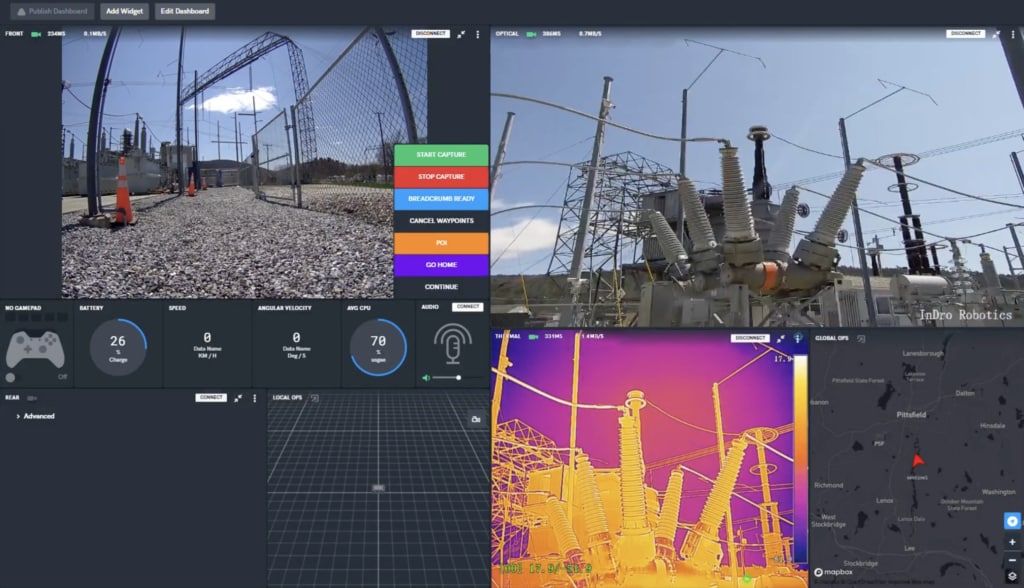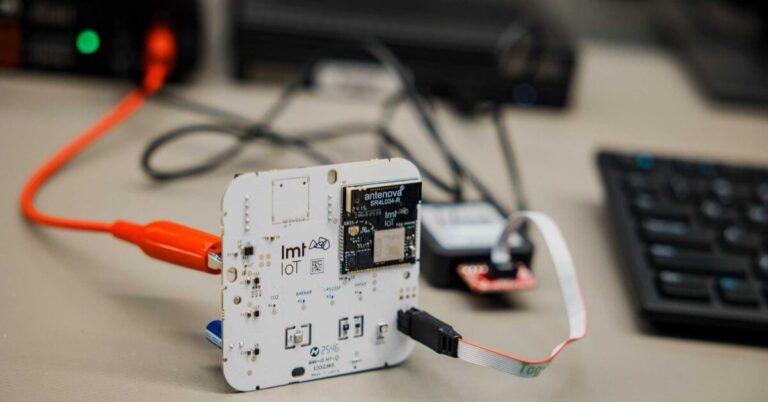T-Mobile announced they are working with InDro Robotics, a leading Canadian air, and ground robotics research, and development company, to make the world safer. The companies have successfully completed trials using T-Mobile 5G to remotely connect and operate Indro Robotics’ ground-based industrial inspection robots, testing security and inspection capabilities at electrical substations.
InDro Robotics’ Sentinel was chosen by the Electric Power Research Institute (EPRI) to evaluate ground-roving robotics based on its ability to provide 24-hour substation asset inspection and security monitoring. Sentinel was up to the task and ran constant surveillance while streaming all data back to maintenance teams in near real-time using a custom integrated 5G router connected to T-Mobile’s network. The rover was able to follow preset paths while running autonomously and was controlled by operators over 5G.
“Like most robotics, the Sentinel requires an ultra-reliable network with low latency, and T-Mobile 5G proves to be more than capable,” said John Saw, EVP of Advanced & Emerging Technologies at T-Mobile. “The possibilities to use 5G in ways that keep people safe, make life easier and help businesses save money are endless. And we’ve barely scratched the surface of what’s possible.”

While this robot won’t be going on any space adventures anytime soon, it could be up for the challenge in the future. Thanks to its thermal camera, depth sensor and 30x zoom capabilities, InDro Robotics’ Sentinel rover can read and report on gauge levels while monitoring for abnormalities like fluctuating component temperatures, intruders, wildlife hazards and more. This can all be recorded and sent back to maintenance teams almost instantly, meaning fewer roll outs, quicker responses and increased on-site safety. Without a reliable connection and 5G speeds, Sentinel’s job would be near impossible.
“The most important part of monitoring industrial complexes is being able to reliably capture and send data to customer maintenance teams in real-time, no matter where they are or how far away,” said Peter King, Head of Robotic Solutions at InDro Robotics. “Using T-Mobile’s 5G network in EPRI’s evaluation was a no-brainer, and thanks to its reach, we can carry out robot and drone operations in the U.S. nearly anywhere, anytime.”
“The best part about running tests like this one is seeing how it all comes together,” added Austin Greisman, Robotics Engineer at InDro Robotics. “Thanks to T-Mobile’s powerful 5G network, we can connect to our robots almost instantly, from practically anywhere in the world.
InDro Robotics chose T-Mobile because it has America’s largest, fastest and most reliable 5G network. The Un-carrier’s Extended Range 5G covers nearly everyone in the country – 320 million people across 1.8 million square miles. 235 million people nationwide are covered with super-fast Ultra Capacity 5G, and T-Mobile expects to cover 260 million in 2022 and 300 million next year.







































